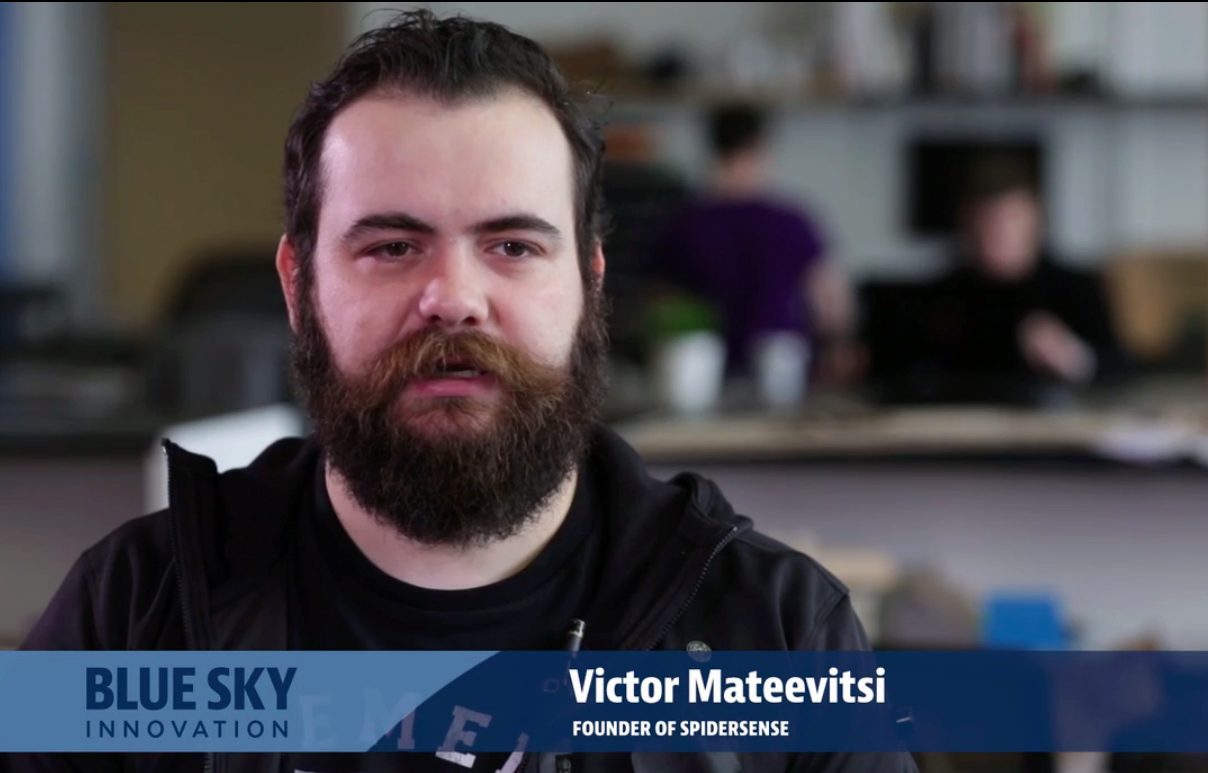Can a Spider-Man-inspired jacket help the blind get around Chicago?
March 23rd, 2016
Categories: Applications, MS / PhD Thesis, Human Augmentics

About
The Chicago Tribune’s Blue Sky Innovation section today featured Victor Mateevitsi, a University of Illinois at Chicago (UIC) Computer Science PhD candidate, and his work on SpiderSense. Here are excerpts from the article “Can a Spider-Man-inspired jacket help the blind get around Chicago?” by reporter Ally Marotti.
SpiderSense “allows you to feel the environment around you. It scans for people or objects, and it vibrates,” he said. “The vibrations increase as you get closer to the object. … If someone is following me, I can feel them.”
He says the SpiderSense jacket could help prevent injury among people with visual impairments, or help firefighters find openings in a smoke-filled building with low visibility. Mateevitsi is working with the Chicago Lighthouse, a nonprofit providing rehabilitation services for people with visual impairments, on improving SpiderSense.
His doctoral adviser, Andrew Johnson, pointed to eyeglasses as an example of an early augmented device. “It’s something that’s so ingrained in our lives it doesn’t look odd to see someone walking down the street with eyeglasses,” said Johnson, the director of research at the UIC Electronic Visualization Laboratory and a Computer Science Associate Professor. “That’s the angle we’re trying to take with this. … What we’re trying to focus on is not so much trying to regain an ability, but how can we add something.”
Mateevitsi is scheduled to pitch at Technori’s maker-themed showcase on Tuesday, March 29.
Read about the event and purchase tickets.
Read the complete Chicago Tribune article and watch a video of SpiderSense.
Mateevitsi’s SpiderSense jacket, filled with sensors and inspired by Spider-Man, was recently featured on the Science Channel’s “All-American Makers.”